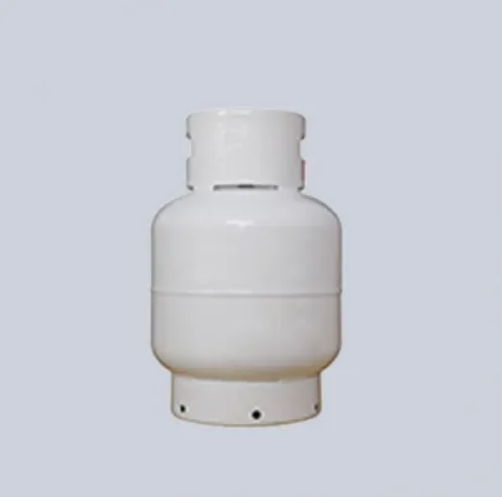May. 26, 2023
LPG (liquefied petroleum gas) gas cylinders are commonly used for domestic and commercial purposes as a source of fuel. They provide a convenient and portable solution for cooking, heating, and other applications. In this news, I will outline how LPG gas cylinders work and the underlying principles behind their operation.
LPG is a mixture of propane and butane gases, which are hydrocarbons derived from crude oil refining and natural gas processing. The gases are liquefied under moderate pressure and stored in steel cylinders for ease of transportation and use. The liquefaction process involves compressing the gases and cooling them to reduce their volume and increase their density, allowing for a larger amount of fuel to be stored in a compact container.

The LPG gas cylinder consists of several key components that work together to ensure safe storage and controlled release of the gas. Let's explore these components in more detail:
The main body of the gas cylinder is typically made of high-strength steel to withstand the pressure exerted by the liquefied gas. The steel cylinder provides a robust and durable container for storing the LPG.
The valve is an essential component that controls the flow of gas in and out of the cylinder. It is usually made of brass or stainless steel and features multiple functions, including on/off control, pressure regulation, and safety mechanisms.
The pressure relief valve is designed to release excess pressure from the cylinder in the event of over-pressurization. It acts as a safety measure to prevent the cylinder from rupturing or exploding. The valve is typically set to open at a specific pressure threshold, allowing the gas to escape and stabilize the internal pressure.
The dip tube extends from the valve into the cylinder and reaches near the bottom. It ensures that the gas is withdrawn in its liquid phase from the bottom of the cylinder, where the LPG is stored. This arrangement allows for a constant supply of liquid fuel until the cylinder is nearly empty.
The float gauge is a simple mechanical device attached to the valve that indicates the approximate level of gas remaining in the cylinder. It consists of a float that rises and falls based on the liquid level inside the cylinder, providing a visual indication of the gas quantity.
The conversion of liquid LPG into gaseous form for utilization. When the valve of the gas cylinder is opened, the pressure inside the cylinder decreases, leading to the vaporization of the liquid LPG. The LPG vapor passes through the valve and is supplied to the connected appliance, such as a gas stove or heater.
The gas is ignited at the burner or ignition source, where it combines with oxygen to produce a flame. The heat energy released by the burning gas is harnessed for cooking or other purposes. The gas consumption rate can be controlled by adjusting the valve to regulate the flow of gas.
As the liquid LPG is converted into gas, the pressure inside the cylinder gradually decreases. The float gauge reflects this change by lowering its position, indicating the reduction in the quantity of gas remaining. Once the cylinder is almost empty, the pressure may become insufficient to sustain a stable flame, signaling the need for a cylinder replacement or refill.
When the cylinder is empty or nearing empty, it can be detached from the appliance and replaced with a new or refilled one. The refill process involves specialized equipment and facilities where the empty cylinders are safely refilled with liquefied gas under controlled conditions.
It is crucial to handle LPG gas cylinders with caution and follow safety guidelines. Some general safety measures include keeping the cylinder in an upright position, storing it in a well-ventilated area, and avoiding exposure to direct sunlight or heat sources.
Regular inspections and maintenance of cylinders, valves, and associated equipment are also recommended to ensure their safe and efficient operation.
LPG gas cylinders provide a convenient and portable source of fuel for various applications. Through the controlled release of liquefied gas and its conversion into gaseous form, these cylinders enable us to utilize the energy stored in LPG efficiently. Understanding the components and principles behind their operation helps ensure safe handling and usage of LPG gas cylinders.
Please contact us for professional help if you need it.
Hot Products
You are more than welcomed to leave your contact info and we will be in touch shortly.
+86 318 8442 7892
+86 318 8442 7892
+86 138 3381 5636
+86 156 3287 3277
Longhua, Jingxian, Hebei province, China.
REQUEST A QUOTE
NAVIGATION